Matador Network's Blog, page 1203
December 12, 2018
Why you need to see Idaho in winter
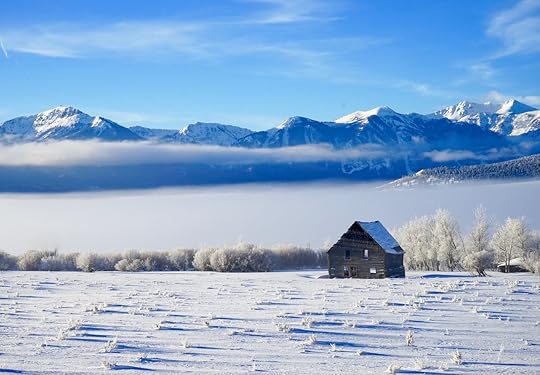
Idaho is one of those places that conjures up very specific images. Mostly just potatoes. But to limit your perception of the Gem State to a starchy root vegetable is about as accurate as calling Mt. Everest a foothill. Idaho is a mountain lover’s paradise sprinkled with just enough urban action to satisfy the avid culture hound, and it’s best experienced in the winter. Here’s why you should brave the cold to go and how to take it all in.
You can visit the site of America’s first chairlift.
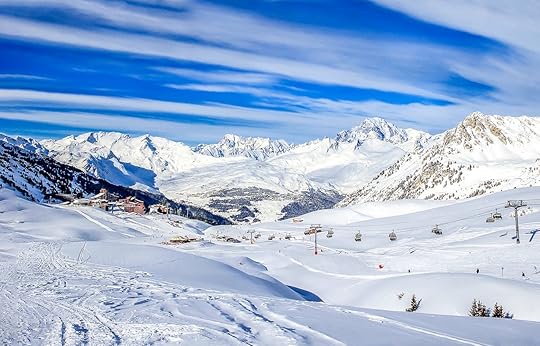
Photo: Rusya007/Shutterstock
Sun Valley Resort, Idaho’s claim to fame in the ski world and still the state’s most iconic ski resort, revolutionized uphill transportation with the opening of the Ruud Mountain Chairlift in 1936. The original lift is long gone — in its serviceable form anyway, which is just fine because the idea of trusting one of the swaying wooden single chairs to safely escort you up the hill is scary enough to send you screaming your way back into the lodge. While it’s no longer carting skiers up for freshies, the legendary chairlift now sits comfortably on the National Register of Historic Places and makes for a great photo opp, even if you don’t jump on any of the ultra-modern detachable quad chairs that now service the ski area.
There’s no line to get into the mountains.
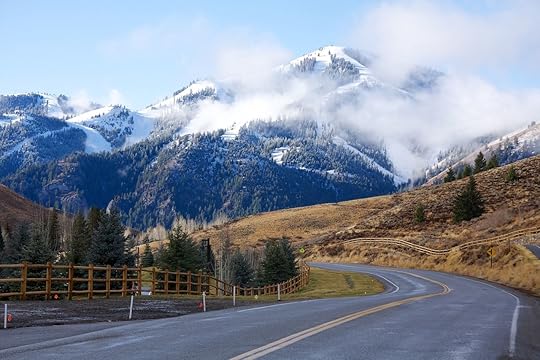
Photo: CSNafzger/Shutterstock
Crowds and nature epitomize two things that shouldn’t go together. Idaho, far from the backlog of hill-bound traffic that plagues California or Colorado, firmly proves that there are still pristine places where you can escape. Head an hour outside of Boise and you’re immediately struck by the realization that there really isn’t anyone around. Idaho is home to over 20 million acres of national forest. Its pine-covered mountains beckon you not only to experience its trails and vistas but also to feel the all-encompassing effect of solitude.
Beyond Sun Valley, Idaho is home to nearly 20 ski areas where the closest thing you’ll find to a lift line is the ticket checker stopping you to scan your pass. Just outside the town of Albion, Pomerelle sees 500 inches of snow in an average winter — and even more in a good year. With the strong early season, this winter could certainly eclipse that and make for some unforgettable powder days. In the Bitterroot Mountains, Tamarack resort gets 300 inches of snow on its 1,000 acres, which when combined with 2,800 feet of vertical drop all but ensures some freshies.
In Boise, you can be in the thick of the action while still being away from it all.
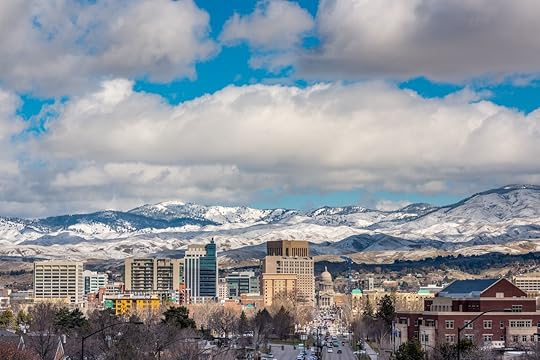
Photo: Charles Knowles/Shutterstock
Boise, the state capital and largest city, is the most isolated metropolitan area in America. While it’s relatively easy for you to buy a ticket and fly right into Boise International Airport, it’s much tougher for cultural influences to bleed into the Treasure Valley. Thus, the city’s restaurant scene — hubbed on 8th street downtown and spreading outwards from there — is uniquely Idahoan, blending urban flavor with high country rusticness and using the bounty of the Snake River Valley. Because it’s Idaho, the first thing you should do is get yourself into Boise Fry Co and eat fried potatoes until you can’t. State & Lemp and Fork specialize in local takes on contemporary and pub classics, respectively. If you’re heading out on the town after dinner, Juniper is the spot to pregame over cocktails and dishes built almost entirely from Idaho ingredients.
If you’re into Basque cuisine and culture, Boise can save you a trip to Europe as it’s home to perhaps the most thriving Basque community in the US. Anchor your stay around the “Basque Block” along West Grove Street in the heart of the city and head straight for Bar Gernika (named after Boise’s Basque-based sister city) and The Basque Market, where you can dive into the city’s best pintxos, lamb, and solomo.
And step from the cold weather to a thriving artistic community.

Photo: txking/Shutterstock
Beyond the Basque influence, renowned museums across town like the Boise Art Museum and Idaho Historical Museum offer insights into the Idahoan values of virtue and creativity. Within Idaho’s art and music communities, artists draw inspiration from the state’s local influences and close access to the outdoors.
For a city of under 300,000, Boise also offers an impressive indie music scene. There’s a good chance you’ll know the bands playing at The Knitting Factory, but local bands take the stage almost nightly at Pengilly’s Saloon, Humpin’ Hannahs, and a handful of other clubs centered around the Main Street corridor. The corridor is also conveniently close to the Basque Block, meaning you don’t even need to hop in an Uber after dinner.
The lakes look even more beautiful surrounded by white.
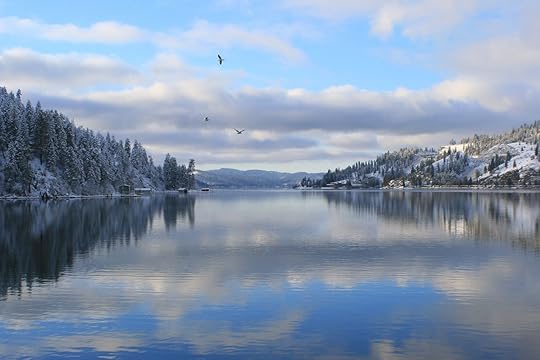
Photo: Leslie McGinnis/Shutterstock
There’s something awe-inspiring about standing on the lakefront, bundled up tight with a scarf tucking into your neck, and gazing out onto a white, frosted abyss. Maybe that’s why life moves so slowly in Coeur d’Alene in winter: People just can’t keep themselves from gazing out over the lake bearing their town name. The migration of eagles over Lake Coeur d’Alene, which happens from November to February, only adds to the effect. You can get an even closer look by taking an actual eagle-watching cruise — after which your friends officially have nothing on you.
Wallace packs a ton of adventure into a tiny mountain town.
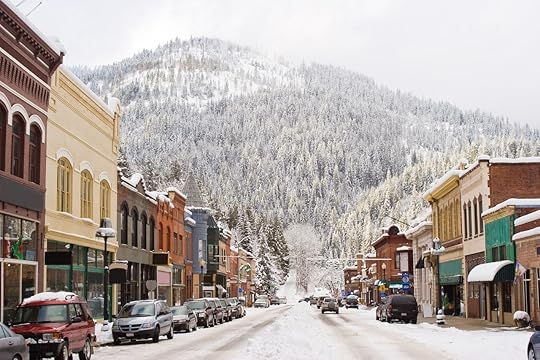
Photo: jfergusonphotos/Shutterstock
Coeur d’Alene is gorgeous. Sun Valley is rustic chic. But just south of the Coeur d’Alene National Forest, the tiny mountain town of Wallace, population 761, is straight-up mesmerizing. No town in Idaho fits the bill of “last great untouched…” quite like Wallace. This is surprising given that there are two ski areas within a half-hour drive and trails within a quick bike or walk of anywhere in town. If you’re looking for a place to break in that new fat bike, Wallace is your jam. The same goes if you’re just looking to find your footing in a simpler place where you can leave the house on foot or ski, get in a jaunt on the trail, and stop by the brewpub for a cold one, all without having to deal with a crowd, line, or even a stoplight.
There’s a bed and breakfast that’s actually shaped like a giant beagle.

Photo: Dog Bark Park Inn
The Dog Bark Park Inn is at the bottom of this list as a sort of “if this won’t convince you, nothing will” ode to the most mind-blowingly awesome place in the entire state, if not anywhere, ever. Part bed and breakfast, part art gallery, and wholly worth a jaunt to Cottonwood in the state’s northwest, this one-room B&B is literally shaped like a giant dog.
The owners, Dennis and Frances Conklin, are among the world’s foremost experts in wooden dog carvings. As it goes when one has such a righteous life path, the idea of breaking out the chainsaw to create the biggest-ever dog carving and then turning it into lodging for canine-enthusiasts the world over came naturally to the Conklins after their carvings developed a global following. But wait — it gets even better. They actually sell their wooden creations on site, including replicas of over 60 dog breeds, so you might even come home with a miniature replica of your best friend as a memento of your trip to glorious, natural Idaho. 

More like this: South Dakota is the most underrated state in America. Here’s why.
The post Why you need to visit Idaho this winter appeared first on Matador Network.

New species discovered in Mekong

Scientists are getting pretty creative when it comes to naming new animal species. There were 157 new species recently discovered in the Greater Mekong — a region that encompasses Cambodia, Laos, Myanmar, Thailand, and Vietnam — and those species have some pretty interesting names. The creative names are generally inspired by physical features that, according to some, resemble well-known celebrities or Hollywood creatures.
Stuart Chapman, WWF’s Asia-Pacific regional director for conservation impact, said, “Ensuring that large reserves are designated for wildlife, along with increased efforts to close illegal wildlife trade markets, will go a long way to conserving the extraordinary wildlife diversity in the Mekong.” Here are some of the new oddly named species.
Lace Bass bat

Photo: Pipat Soisook/WWF
Since this bat’s hair slightly resembles that of *NSYNC’s Lance Bass with his ‘90s-era frosted tips, the name stuck. This new species was quickly identified as rare and unique due to its long, golden hairs.
Skywalker Hoolock gibbon

Photo: Fan Pengfei/WWF
This monkey was originally discovered in 2007, but it took 10 years to actually confirm its status as a new species. It got the honor of the “Skywalker” name because of its ability to deftly swing through the forest canopy. The Skywalker Hoolock Gibbon is listed as one of the 25 most endangered species on the planet.
Toad from Middle Earth
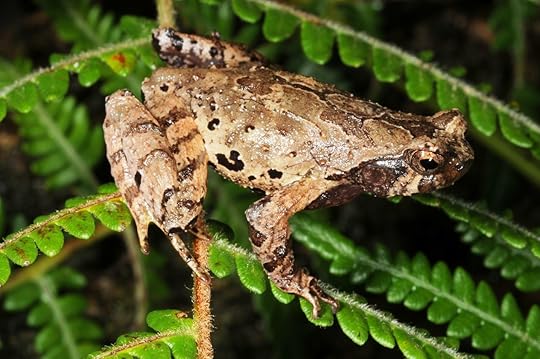
Photo: NIKOLAY A. POYARKOV/WWF
The forest habitat of these amphibians has drawn comparisons to the elves of Middle Earth. These Asian mountain toads also have small horns on their eyelids and are masters of camouflage.
Pancake catfish

Photo: XIAO-YONGCHEN/WWF
This elusive fish is found in the remote mountains of Myanmar in extremely cold water. Not much is known about this species though scientists believe it may soon be at high risk due to climate change.
Leaf-toed gecko

Photo: M. SUMONTHA/WWF
These geckos make their homes in limestone environments with a unique coloring characterized by two “racing stripes” across the length of their bodies. This coloring has never before been seen in other species of geckos.
Due to poaching and the destruction of wild habitats, there has been a 60 percent decline in the size of mammal populations over the last 40 years, especially in the Greater Mekong region. The WWF is taking steps to launch conservation efforts in this region, particularly with regard to protecting these newly discovered species. You can read the full report, entitled “New Species on the Block,” on the WWF website. 
H/T: WWF

More like this: 10 endangered animals to see (and save) before they’re gone
The post ‘Lance Bass bat’ with frosted tips and other new species discovered in Greater Mekong region appeared first on Matador Network.

Everything airport dogs can detect

In 1972, an NYPD German Shepherd named Brandy saved the day when she sniffed out a bomb that had been stashed on a plane, averting a massive aviation crisis and cementing the essential role dogs play in maintaining travel security.
Today, dogs continue to serve vital roles in maintaining airport security from that first screening before boarding to that final check while crossing through customs and border patrol. It is thanks to months of training, during which the dogs’ natural desire to hunt and their incredible olfactory sense are honed, that the pups learn to search for illegal and dangerous items as they search for their favorite toys.
Last year, over 1,000 highly trained dogs were reported to be employed in airport security roles within the Transportation Security Administration (TSA), predominantly focusing on anti-terrorism measures such as apprehending passengers carrying explosives.
But sniffing out bombs is only one of the many incredible tasks detection dogs are able to perform at airports. Whether they’re stopping poachers in their tracks or keeping malaria at bay, here are nine ways airport dogs help and amaze us every day.
1. They stop the trafficking of live, wild animals.
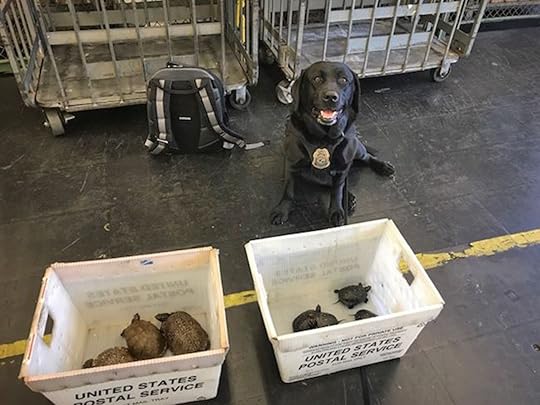
Photo: U.S. Fish and Wildlife Service/Facebook
The TSA isn’t the only government agency working with dogs to patrol what crosses the border: The US Fish & Wildlife Service also relies on canine noses to sniff out wild animals unlucky enough to be forced into the illegal pet trade. Their Wildlife Detector Dog Program relies on shelter dogs, currently all highly trained labradors and lab mixes, to identify when packages labeled something as innocent as “cosmetics” are actually jam-packed with animals illegally removed from the wild.
2. They keep ivory, rhino horn, and other animal parts from traveling abroad.

Photo: WWF
For many animals, especially those that have been incorrectly labeled as having medicinal powers, they are long dead by the time their parts arrive at the airport. That’s why dogs trained in the art of sniffing out ivory, rhino horn, and other poached creatures have been deployed in Kenya’s Mombasa port, the presumed heart of the African ivory trade. With dogs working diligently to stop illegal wildlife trafficking at its source, maybe the despicable practice will reach an end before the trafficked species do.
3. They find stacks of cash.

Photo: Dvorakova Veronika/Shutterstock
Dogs that can go and fetch cash money for you do exist, but most of them can be found at airports around the world identifying illegal movement of money. Even though the CCDs (Currency Detection Dogs) aren’t fetching payouts for their handlers, they are identifying undeclared money that is likely being used in a range of nefarious purposes, from the trading of wild animals to sex trafficking. Most countries have passengers declare if they’re carrying more than $10,000 USD in cash, and amazingly these dogs are able to differentiate between bills below and exceeding that amount.
4. They help eradicate malaria.

Photo: Medical Detection Dogs/Facebook
Medical Detection Dogs in the United Kingdom are a more recent addition to the team of dogs working against the movement of undesirable things across borders. With proven success at sniffing out cancer, Parkinson’s Disease, and other human ailments, this doggy skill was applied to malaria with a 70% success rate in initial tests. This method of disease prevention is still in its early stages, but it is looking very promising, especially when compared with the relatively slower method of using machines to individually test people and items.
5. They help prevent the invasion of plant and animal species.

Photo: U.S. Department of Agriculture
The introduction of a foreign plant or animal can have devastating effects on foreign ecosystems. The Beagle Brigade, a division of the US Department of Agriculture (USDA) is comprised of beagles trained specifically in the detection of unwanted food and agricultural products, typically found at baggage claim. Roughly 75,000 seizures are made per year in the US. Other countries, especially islands like New Zealand and Australia, have beagles diligently checking everything that lands at the airport, as one wayward plant or animal could wreak havoc on sensitive endemic environments. Beagles are favored for their small stature, friendly demeanor, and hyper-tuned sense of smell, and they enter the program from breeders, rescues, and shelters.
6. They keep explosives off planes.

Photo: Dragosh Co/Shutterstock
In the United States, explosives-sniffing dogs graduate from the National Explosives Detection Canine Team Program, either focusing on sniffing out passengers or luggage and packages. Belgian Malinois, German Shepherds, German Shorthaired Pointers, German Wirehaired Pointers, Golden Retrievers, Labrador Retrievers, and Vizsla dogs are the most common breeds assigned to the task, with retrievers favored for their calm demeanors. These are the dogs you will encounter in the security line en route to your gate, and while they are always very adorable, they must not be pet.
7. They find drugs.

Photo: Dragosh Co/Shutterstock
Most people think the primary purpose of airport sniffer dogs is to find drugs, but they are predominantly deployed to protect planes from bombs and ecosystems from invasive species. Dogs are trained to find multiple things that shouldn’t be there, drugs included, but that’s typically at the trafficking level, meaning large amounts of the stuff. “Searching for marijuana is not on the T.S.A.’s to-do list,” writes Julie Weed for the New York Times,” but know that detection dogs are still perfectly capable of finding it, and if they do, there’ll be trouble.
8. They find contraband electronics.
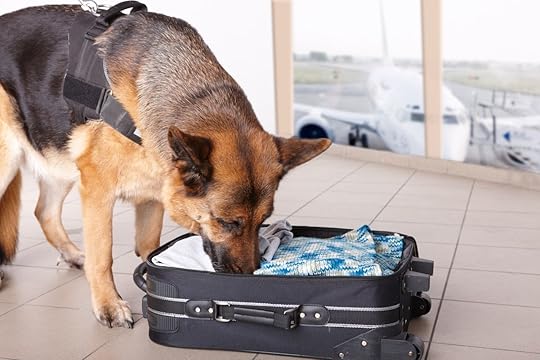
Photo: Monika Wisniewska/Shutterstock
Technology has evolved quickly, but not so quickly that it has outrun the nose of a dog. Electronics-sniffing dogs are new to the detection scene and require much longer training due to the faintness of electronics smells, but they have already proven their worth by helping in the takedown of notorious pedophile Jared Fogle. These specialty sniffers are deployed in high-risk cases where terrorism or human trafficking can be at play. Often USB thumb drives contain the evidence needed to prevent an attack or put a criminal away. As the world goes more digital (crime along with it), expect to see more of these electronics-seeking dogs doing their work at airports.
9. They provide comfort to stressed out passengers.

Photo: Shine Caramia/Shutterstock
Despite the fact that airport sniffer dogs have been trained to narc on passengers, their very presence provides a sense of comfort to them. It’s hard not to smile at a happy labrador working hard to earn a treat or giggle at the tickle of a wet beagle nose sniffing out invasive plants. It’s also calming for passengers to witness the visible presence of anti-terrorism tactics in action, making them more assured of the airport’s security. Perhaps the detector dog’s greatest skill is resisting cuddling and kissing every person who walks through the airport yet still improving their mood. You’re not allowed to pet them, but as recognition for dogs’ innate talents spreads, you may just find yourself at an airport that employs therapy dogs that you are very, very encouraged to pet. 

More like this: Everything you need to know about your rights for flying with pets
The post 9 amazing things airport dogs can do appeared first on Matador Network.

Win money to go sans phone in 2019

Put your hand up if your new year’s resolution is to spend less time on you phone. Now, put your hand up if you’re actually willing to give up your phone for the entirety of 2019. There probably aren’t many hands still up, but if there are, Vitaminwater is offering $100,000 to anyone who can go a full year without their smartphone. Just use the hashtag #nophoneforayear on Twitter or Instagram and write a description of what you think your year would look like without a smartphone. Based on originality and creativity, the Vitaminwater team will then choose a winner.
View this post on InstagramA post shared by @vitaminwater on Dec 11, 2018 at 6:29am PST
If you’re wondering how they can possibly verify that you completed the challenge fairly, you’ll be subjected to a lie detector test at the end of the year. And if you don’t make it the whole year, that doesn’t necessarily mean you’re going home empty-handed. Those who fall short of a year but make it at least six months without their phone will receive a $10,000 consolation prize.
If you do decide to participate, you won’t be completely phone-less. Contrary to popular belief, there was a time before smartphones, and Vitaminwater will provide all contestants with free Nokia 3310s. You can’t FaceTime, check Facebook, or send Snapchats on them, but at least you can play Snake all year long. The alternative? Get really, really, good at fooling lie detectors.
To enter, use the #nophoneforayear hashtag and write your description by January 7th. Official rules are available here. 
H/T: BuzzFeed

More like this: 10 essential travel skills we’ve lost to smartphones
The post If you give up your smartphone for 2019, Vitaminwater will pay you $100,000 appeared first on Matador Network.

Overlooked wine and cheese pairings

Wine and cheese is a classic, if very Eurocentric, combination. It’s talked about extensively by pretty much anyone who’s a fan of fine dining, and wine and cheese pairings are served everywhere from at-home wine parties to the fanciest wineries and restaurants. All the attention is for good reason. Tart or juicy wine is the best companion to a fatty, creamy cheese. Plus, few things can bring as much joy as either of these things on their own, so putting them together only seems right.
It’s even better when you can pair wine and cheese from the same region. “If it grows together, it goes together” is an old adage that generally rings true. And although everyone has different taste buds, there are still some unbeatable combos. Even if you disagree with some of the pairings, that just means you have an excuse to go out and buy some more wines and cheese to try again.
Champagne, France: rosé Champagne with Chaource cheese
You think you know Champagne with all its glitzy associations of grandeur. But there’s a good chance you’re not drinking Champagne the way they do in Champagne, France. When it comes to pairing the region’s world-famous beverage with cheese, Arnaud Richard, the director of marketing and communication at Champagne Laurent-Perrier, suggests matching a rosé Champagne with Chaource, a cheese from the region. Rosé Champagne has “a great aromatic richness,” Richard tells Matador Network. That makes it the perfect match for soft, buttery Chaource, which is made with cow’s milk and aged between two weeks and two months. The epicenter for Chaource is the village of the same name, located at the southern edge of France’s Champagne region.
Look for wines from: Laurent-Perrier and Moët & Chandon
Northwestern Greece: Xinomavro with kasseri cheese

Photo: Berke/Shutterstock
Kasseri is one of the better-known Greek cheeses, and it’s made with sheep’s milk and a bit of goat milk. The taste is tangy, savory, and salty, and the texture is somewhat similar to Provolone. The wine to match it with is a Xinomavro from northern Greece. The Xinomavro grape is primarily grown in upper regions of the country and generally makes a wine with deep, dark fruit flavors. Xinomavros from the Amyndeon appellation are ones to especially keep an eye out for, according to Kamal Kouiri, who oversees the wine program at the Greek-focused restaurant Ousia. The region has cold winters and dry summers, and two nearby lakes that contribute to a mild climate. Alpha Estate in Florina is making wines that are “the most approachable, terroir driven wines you will ever taste from Greece,” Kouiri says.
Look for wines from: Alpha Estate and Kir-Yianni
Piedmont, Italy: Barolo or Barbaresco with Toma cheese
Piedmont, located in northwestern Italy, is one of the country’s most famous wine and food regions. On the wine side, it’s the home of the Nebbiolo grape, which makes two of the most age-worthy Italian reds: Barolo and Barbaresco. The duo is known as the “king and queen” of Piedmont, says GianLuca Sardo, the general manager of 10 Corso Como. Sardo is from Torino in Piedmont, and the king and queen “are always my go to choices when picking a great bottle,” he says. For the cheese, reach for Toma, a broad class of cheese that’s made from milk collected from herds in a single region (in this case, Piedmont). The taste has a bit of truffle flavor to it with a garlicky aroma, which is fitting because the only thing that can compete with the renown Nebbiolo wines is Piedmont’s truffles.
Look for wines from: Barale Fratelli and Produttori del Barbaresco
Northeastern Spain: Rioja Reserva with one-year-old Manchego

Photo: Angela Aladro Nick/Shutterstock
Manchego is one of Spain’s most famous cheeses, and its method of production is protected by a D.O. (Denominación de Origen). One of the qualifications is that 100 percent of the milk used is from a breed of sheep native to the La Mancha region. The team from Murray’s Cheese, an artisanal cheese shop in New York City, describes one-year-old Manchego as having a rich nuttiness and savory quality like broiled lamb chops. The wine that Manchego pairs best with is one from the Rioja region just north of La Mancha. Specifically, Manchego pairs with Rioja Reserva, which is aged for three years, at least one of which is done in barrel. Reservas are the perfect balance between young and fruity and aged and oaky.
Look for wines from: Marques de Riscal and Vivanco
Virginia: red blend with Appalachian cheese
European countries are the best known for wine and cheese pairings, but they’re definitely not the only ones. America produces both good wine and good cheese — although, to be fair to Europe, much of the wine and cheese is inspired by somewhere across the Atlantic. Nevertheless, when it comes to American cheese and wine pairings, you won’t be disappointed. Virginia, one of America’s original wine regions thanks to Thomas Jefferson, is a good place to start when thinking of stateside wine and cheese pairings. Meadow Creek Dairy makes an aged mountain cheese it calls Appalachian that’s similar to Piedmont’s Toma and France’s Tomme but is 100 percent Old Dominion. The wine that goes with it is a classic red blend of Merlot, Cabernet Franc, and Syrah — all grape varieties that thrive in Virginia wine country. It “…has enough juicy fruit and structure to stand up to the salty crystalline cheese, which mellows the moderate tannins,” says Aileen Sevier, director of marketing at Early Mountain Vineyards.
Look for wines from: Early Mountain Vineyards and Pippin Hill
Northern California: Chardonnay with Monterey Jack

Photo: DenisProduction.com/Shutterstock
Northern California, specifically around Napa and Sonoma, is not only the state’s wine country but also the country’s wine country. It’s famous for producing, among many other things, big Cabernet Sauvignons and buttery Chardonnays. Monterey, though not as well known as Napa or Sonoma, is not to be left out when it comes to California’s great wine regions. It’s also the home of one of the country’s original cheeses: Monterey Jack. Mass-produced commercial versions can be bland, but good Monterey Jack cheese has a sweet and nutty flavor that can be tangy when aged. Pair it with a Chardonnay from Central or Northern California, choosing an oakier option with a young Monterey Jack and an unoaked and more tart Chardonnay with aged Monterey Jack.
Look for wines from: Sandhi and Estancia 

More like this: The best place to go wine tasting in all 50 states
The post The most overlooked wine and cheese pairings from around the world you need to serve appeared first on Matador Network.

Instagram influencer scams hopefuls

People will go to great lengths to reach Instagram follower benchmarks and potentially live out their dreams of becoming an influencer — especially in the travel world. Current Instagram stars know this better than anyone, and they can either use their knowledge to benefit others… or take advantage of them. Aggie, of Travel in Her Shoes, currently has 860k followers on Instagram, and she offered a 12-week Master Tribe course designed to help fledgling Instagrammers reach superstardom. The course cost $500 and included modules on topics like writing bios, pitching companies, and editing videos. Unfortunately for students, once they forked over the $500, Aggie didn’t exactly deliver on her promises.
One student who goes by “Wannabe Influencer” wrote a personal account on Medium. The red flags started flying in the first week when students were given a challenge of selling the course to one other person. “Confusion spread rapidly,” wrote this student. “The Instagram Course straight up seemed like a pyramid scheme. How could we ask our own followers to purchase a $500 Instagram Course that we had barely started ourselves?”

Photo: Wannabe Influencer/Medium
This challenge created an angry mob-like atmosphere amongst the virtual students, believing they weren’t getting their money’s worth or the one-on-one interaction with Aggie they had expected. Although refunds had been promised to dissatisfied students, Aggie allegedly didn’t deliver, and by this point, she had already collected $225,000, according to the Medium writer.
The fervor subsided until Week 6 when a behind-the-scenes video photography class from Aggie’s trip to Morocco never materialized. The trip happened but no video. Around the same time, Aggie revealed that she was heading to Asia for an “Eat Pray Love” experience. After that, no videos were posted, allegedly due to a lack of WiFi. That was the end of the course, no refunds were issued, and the result was 500 unhappy and unfulfilled Instagram hopefuls.

Photo: Wannabe Influencer/Medium
After the uproar, Aggie did start posting videos and issuing excuses via DM, but for the students, it’s too little too late.

Photo: Wannabe Influencer/Medium
On whether she would recommend Instagram courses to other prospective students, Wannabe Influencer says while they might be useful for inspiration, “If you’re looking for the secret to blowing up on Instagram, I’ll tell you right now, you’re not going to find it from the Master Tribe course.” 
H/T: Medium

More like this: This hilarious Instagram account shows how unoriginal travel influencer photos are
The post This Instagram travel influencer is accused of scamming hundreds of students out of $500 appeared first on Matador Network.

Where to find Bali's hangover cure

The origin of jamu, a traditional Indonesian herbal medicine, dates back around 1,300 years ago to the Mataram Kingdom. All these years later, it’s still very much a part of everyday life on the holiday island of Bali — and possibly the cure-all your tired, hungover self has been looking for.
Jamu is believed to improve general mental and physical wellbeing, as well as cure a range of ailments from run-of-the-mill hangovers to sore joints and depression. But it’s not just one jamu recipe. A Mataram medicine book from the 1700s lists around 3,000 jamu recipes, many of which are still in use today thanks to the families who have passed them down from generation to generation. While most jamu concoctions contain a variety of roots, seeds, flowers, herbs, and spices, most of today’s takes on the revered treatment come infused with turmeric.
The secret is in the ingredients, although the claims of jamu’s powers are more backed by tradition than science. Ingredients like turmeric, ginger, and tamarind that are put into jamu are full of vitamins, and the mix is generally thought of as an antioxidant, anti-inflammatory, and liver detoxifier. It’s also been heralded as both a promoter of women’s independence and negatively viewed as a tool used to control women’s sexuality. Regardless of how you think of it, there’s likely someone in Indonesia who will back up your claim.
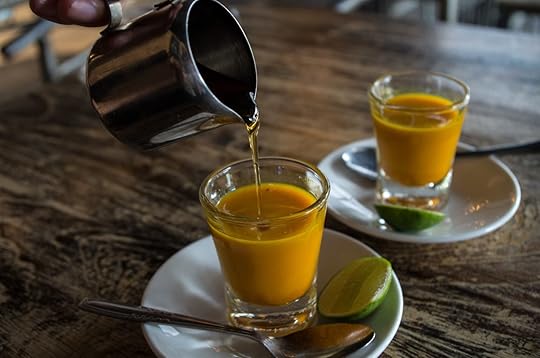
Photo: swuerfel/Shutterstock
While jamu is often prescribed by a balian, a traditional Balinese healer, it’s also commonly prepared by women who sell the potion at the island’s markets and on the streets. Traditionally called gendong, a jamu-seller used to do the rounds of her neighborhood each morning with a bamboo basket of potions strapped to her back. Today, jamu-sellers are usually seen on a bicycle or motorbike. And while the plant-based tonic is often an acquired taste due to its strong, spicy, and bitter flavor, it remains a favorite among the Balinese and health-conscious visitors to the island.
In fact, a whole industry has developed around the elixir, with manufacturers producing the drink en masse for sale at pharmacies and supermarkets. The cure-all is also often retailed in the form of pills, capsules, and powder. Even so, there’s no denying that Bali’s jamu tradition has survived the onslaught of modernity. Hand-pressed potions remain available at traditional markets, through balians, and at select restaurants and cafes.
Here are just a few of the island’s outlets where health enthusiasts and the curious can get their jamu fix.
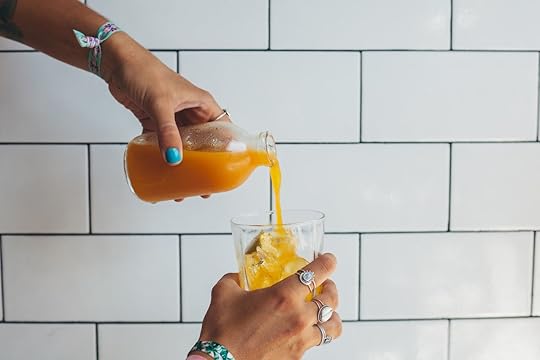
Photo: zjuzjaka/Shutterstock
The Garden Kafe and Juice Bar at the Yoga Barn
Located in the center of Ubud, the island’s creative enclave, Yoga Barn’s Garden Kafe and Juice Bar is a one-stop-shop for those who care about how they fuel their body. The cafe specializes in vegan and vegetarian cuisine made from organically grown produce, and it serves a number of health tonics. One of those tonics is a jamu concoction with coconut water, turmeric, and honey. The Yoga Barn also offers (you guessed it) yoga classes, as well as dance, meditation, and Ayurveda retreats.
Paon Doeloe in the Taman Bhagawan
A part of Taman Bhagawan, or Bhagawan Garden, Paon Doeloe is a semi-open venue that overlooks Tanjung Benoa Beach and Mount Agung. The restaurant’s menu offers guests a “journey through the archipelago” with dishes from across Indonesia. The venue also serves one of the widest ranges of jamu on the island, with eight different options guaranteed to put a spring in your step. Some of the more unusual choices on the menu include temulawak (curcuma, ginger, tamarind, cloves, cinnamon, cumin, cardamom, and black peppercorn), sereh telang (lemongrass, butterfly pea, lime leaf, lime peel, and spices) and wedang jahe (red and white ginger, lemongrass, pandanus amaryllifolius, and palm sugar).
Peloton Supershop
Peloton is a plant-based cafe that “encourages earthlings to come together and tread lightly as we carry out our journey on this planet.” Aside from a variety of colorful vegan fare, the cafe serves a number of health drinks. Try the signature jamu — a chilled turmeric tonic with lime, spices, and coconut nectar — or indulge in an Ayurvedic tea, fresh juices, or a shot of superfood powders and spring water. Those who like to get around on two wheels will be pleased to know that Peloton doubles as an artisan bicycle store.
Biku
Besides beer, cocktails, and soft drinks, Biku in Seminyak offers a range of jamu-inspired elixirs. Check out the cafe’s healthy drinks section to find gems such as a turmeric, lemon, and honey drink; wheatgrass shots; and even a turmeric latte. On the food front, Biku dishes up healthy, and not-so-healthy, delights. The cafe’s menu features a range of Indonesian dishes, salads, burgers, and steaks. Housed in an atmospheric joglo (traditional wooden Javanese house), Biku also has a bookstore and a tarot reading salon.
Nadis Herbal
Down the street from Ubud’s Royal Palace is Nadis Herbal, a small shop that offers nature-inspired workshops and walks. Ideal for those wishing to learn more about Bali’s healing plants and herbs, as well as a holistic approach to health, Nadis Herbal gives the curious a hands-on experience of how to utilize the island’s bounty. Visitors can opt to do a jamu-making workshop or a herbal walk, during which participants also learn about Bali’s UNESCO-listed subak irrigation system. Nadis Herbal doubles as a health store that stocks natural products such as face creams, shampoos, massage oils, and lip balms. 

More like this: What it’s like to drink anti-aging beer in Myanmar
The post This hangover cure from Bali is Indonesia’s miracle drink appeared first on Matador Network.

Why Brazil needs ecotourism

On January 1, 2019, right-wing politician Jair Bolsonaro will be inaugurated the new president of Brazil. That is bad news for the planet.
Bolsonaro, an admirer of President Trump, has called climate change a hoax, says efforts to curb deforestation of the Amazon — which provides over 20 percent of the world’s oxygen — are funded by foreign powers aiming to halt Brazil’s economic development, and wants to lift protections for the indigenous peoples who live in the rainforest.
Bolsonaro also abruptly canceled Brazil’s plans to host a UN-sponsored climate change summit next year. I remember feeling proud when my home city, Rio de Janeiro, hosted the first major UN Earth Summit many years ago. To see the country I love forfeit any shred of environmental leadership is distressing.
Just last week, Bolsonaro nominated a pro-business climate skeptic, Ricardo Salles, as his incoming Minister of Environment. When Salles was Environment Secretary for São Paulo state, he was accused of illegally redrawing maps to open environmentally protected areas to mining.
With all the bad news, what can we as concerned travelers do? The temptation might be to boycott any travel to Brazil to register our disapproval. But that’s not the solution.
“Do not boycott Brazil,” says Ana Paula Pessoa, a Brazilian entrepreneur who was CFO of the 2016 Summer Olympic Games in Rio de Janeiro and is a board member of The Nature Conservancy in Brazil. “That would be worse.”
Support ecotourism.

Photo: Filipe Frazao/Shutterstock
As Pessoa explains it, indigenous communities in the Amazon are under threat from developers who want their land for cattle ranching and agribusiness — and they need viable alternatives. Tourism that brings cash, and supporting those communities will be more valuable than a boycott.
When you travel to the Amazon, “You’re supporting local communities that need [tourism] desperately,” she says. With economic options that keep their ecosystems intact, those communities can better avoid turning their land to agriculture or selling it to speculators.
Ian Thompson, Conservation Director at the Nature Conservancy and based in the city of Belem at the mouth of the Amazon River, agrees with Pessoa.
“Tourism is increasingly an option in the sustainability agenda. Indigenous people are really becoming open to tourism,” he says. But if tourists boycott Brazil in eco-protest then “… those enterprises will fail. And people who want to convert the area to agribusiness will say there are no viable alternatives.”
Use your digital voice.

Photo: Vinicius Tupinamba/Shutterstock
For travelers, Thompson takes things a step farther. It’s not just about spending your travel money somewhere that supports communities living in natural areas but also using your voice, he says.
“Tourists have a voice that they didn’t have before. They have a digital voice,” he says. “People should be conscious of using it.” Travelers who post photos of natural areas can help elevate appreciation of those places, says Thompson. That’s sorely needed in Brazil.
In fact, Brazil’s economic crisis of recent years means that more Brazilians are traveling within Brazil. Rather than taking pricey trips to US cities like Miami and New York, Brazilians are visiting places like Chapada Diamantina National Park, a stunning reserve in eastern Brazil with mesas to rival anything you’ll find in the southwestern US but much lusher — with waterfalls, monkeys, anteaters, and abundant flowers. The hope is that Brazilians will place more value in these areas.
Another beautiful place is the Mamirauá Sustainable Development Reserve, 4,300 square miles in the state of Amazonas that make up Brazil’s first nature preserve — set up after years of lobbying to protect a rare endemic monkey. Previously a “no-go zone,” it’s now slowly opening up to visitors, says Thompson — with multi-day tours and accommodations options like the Ucari Lodge.
Thompson also points to projects run by the Instituto Socioambiental to help indigenous people create their own community tourism in the rainforest. A third option is tourism developed by indigenous communities themselves. Some local tribes are opening up to controlled, limited visits from outsiders and are managing this process themselves.
Embrace all of Brazil’s natural beauty — not just the Amazon.
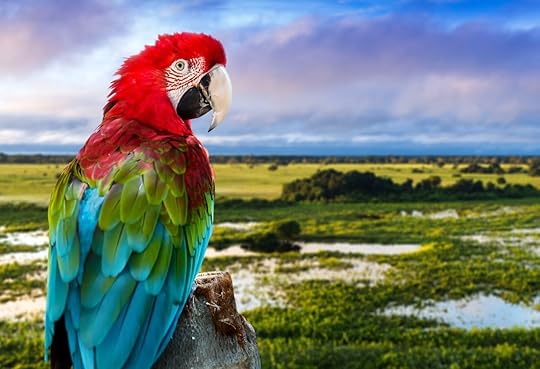
Photo: Filipe Frazao/Shutterstock
Of course, not everyone wants to travel deep into the Amazon, nor should they. The rough conditions are not for everyone, and it’s extremely dangerous to travel into the rainforest without a respected organization. Indigenous groups are wary of outsiders, with good reason. For decades, land speculators have been murdering local peoples. With the new president’s apparent disdain for Amerindian cultures, those speculators may feel they can kill with impunity. Naïve tourists could find themselves in the wrong place at the wrong time.
However, there are plenty of alternatives. Donald Sawyer, a senior advisor for the Brazilian Institute for Society Population and Nature, recommends staying in the Amazonian cities of Manaus or Belem. “You’ve got international airports and good hotels. The rainforest is right there.”
You can also stay at luxury accommodations in the rainforest like the Cristalino Lodge, which will take you on nature tours to observe some of the fauna, including monkeys, sloths, iguanas, brightly hued frogs, and well over 500 bird species. The Rio Azul Jungle Lodge and Pousada Thiamaçu are less pricey, but their focus is still on ecotourism and, located as they are on tributaries of the Amazon River, fishing.
But it’s not all just about the Amazon; all of Brazils ecosystems are under threat and in need of tourist support. These landscapes can be just as spectacular as the rainforest to visit — just without so many mosquitos.
Brazil’s massive interior savannah, which covers an astonishing 770,000 square miles, is critical to the Brazilian ecosystem, functioning as a conduit bringing water from the Amazon and the Atlantic to the rest of the country — for consumers, agriculture, and hydroelectric power.
Because that savannah, Brazil’s “Cerrado,” is a mix of forest and different landscapes, it’s a lot easier to plant soybeans there, and it’s been much more severely degraded by agribusiness than the Amazon. Travel to places like the Pantanal can promote interest in these areas as natural reserves, not as corn fields.
Be a conscious consumer.

Photo: Filipe Frazao/Shutterstock
Sometimes, though, boycotting something you disapprove of just feels right — so be a conscious consumer and boycott beef, soy, and other agriculture products that have been grown on recently cleared land. Several wholesalers and retailers have responded to concerns from consumers in the US and Europe and refused to buy such products, says Sawyer. Their focus has been largely on products from the Amazon, though, and should also include those from the Cerrado, he adds.
As a traveler, you’re a consumer as well, and you need to be careful about how you do it. If you do opt to travel to Brazil’s threatened areas — both to show your appreciation for them and to bring local communities your tourism dollars — do it sensitively.
“It’s a double-edged sword,” says Thompson of the local communities who opt to open themselves up to tourism. The money helps them turn away land speculators, but it also threatens their traditional way of life. It’s important to do your research here.
Thompson sums it up like this: “Don’t boycott Brazil. Be conscious in your choices, and seek out organizations that support the communities you care about.” He also reminds us again to use our digital voices when we represent our experiences in Brazil’s incredible natural beauty.
So start planning your trip… and, when you get there, take a lot of pictures. 

More like this: The Pantanal in Brazil is the best wildlife-watching spot in South America
The post Brazil’s new president is a threat to the environment. Here’s what you can do about it. appeared first on Matador Network.

Abandoned malls from a Reddit sub

One of the less-ballyhooed Christmas traditions was the daylong search for a parking spot at the local mall. Shoppers cruised parking lots like it was a cold-weather Mad Max, scouring the landscape in virtual spiked shoulder pads doing whatever had to be done to survive the shopping apocalypse. Now, shopping malls are a different kind of apocalyptic landscape, where barren lots lead to eerie concourses full of empty storefronts and long-drawn shutters. Even during the holiday rush, strangely empty malls sit as a testament to a bygone era as the frenetic craze of holiday shopping is now mostly limited to Amazon fulfillment centers.
Though people no longer congregate en masse at malls, they do on Reddit, where there is a hilarious sub thread devoted to dead shopping malls. This Christmas, members posted pictures and reminiscences from their favorite dead malls. Though some malls are merely on their last legs, the images are both nostalgic and sad. But they do remind us that even when an industry seems to be booming, it’s never all that far from complete desolation.
Westside Pavilion — Los Angeles, California
Westside Pavilion – Los Angeles, CA. One of my childhood malls. from r/deadmalls
Though not dead yet, this mall on Westwood and Pico Boulevard on LA’s Westside lost its last anchor tenant — Macy’s — in March. This after the Nordstrom left for nearby Westfield Century City mall last year. The developer is planning to turn the entire thing into office space by 2021 though the Westside Tavern and Landmark Theatres move house will stay open.
Mall 205 — Portland, Oregon
Middle of a Saturday at mall 205, no one but us dorks from r/deadmalls
This Hazelwood-area mall has two huge anchor tenants — Home Depot and Target — that still draw masses of people on the weekends, about six of which find their way inside the actual mall. Not that you can blame them with little inside other than a Famous Footwear; a Bed, Bath and Beyond; and a DMV. The land it sits on housed a sanitarium over 100 years ago, which might explain part of why the vast, empty hallways make you feel a little nuts.
Charlestowne Mall — St. Charles, Illinois
An oldie I have of the former fountain in the charlestowne mall in St. Charles, IL. This interior section has since been entirely walled off from the anchor stores. from r/deadmalls
This Chicago-area mall was once a landmark hangout for suburban teenagers, but it closed its interior section for good in late 2017. A few anchor stores were still open via exterior entrances, but Carson’s department store closed earlier this year, sending the mall one step closer to the grave. Charlestowne is slated to be demolished and replaced with apartments and townhomes.
Westgate Mall — Madison, Wisconsin
The Mall directory in Westgate mall in Madison wi from r/deadmalls
Pretty much all that’s left of this one-time shopping hub is a T.J. Maxx, which is riding out its 15-year lease until the mall is razed and redeveloped. The Hy-Vee grocery store on the south end owns most of the property and is rumored to be waiting out the remaining leases, so it can turn the property into something else.
Pittsburgh Mills — Pittsburgh, Pennsylvania
Once upon a time, this mid-2000s mills mall was envisioned as a shopping center of the future with an IMAX, glow-in-the-dark golf, and trendy bowling alley. Flash forward to 2017 and the mall was sold at a foreclosure auction for $100, earning it a dubious distinction as the “Hundred Dollar Mall.” Though its actual value is still somewhere between $10 -$30 million, depending who you ask, its handful of tenants aren’t keeping it afloat. No plans for demolition have hit quite yet, but Morgan Stanley — the company who bought it for $100 — has no plans to invest.
Forest Fair Village — Fairfield, Ohio
A sad Christmas display at Forest Fair Mall/Cincinnati Mills from r/deadmalls
The one-time Cincinnati Mall, then Cincinnati Mills Mall, has been through more name changes, ownership changes, and bankruptcies than a minor league baseball team. The poor place never stood a chance, erected between two other huge malls at Tri-County and Northgate, in a mostly blue-collar area. Currently, the 90-acre site has just a handful of tenants, none of which seem to be thriving. The space has been for sale for 2017 for a cool $50 million but hasn’t found many takers.
Myrtle Beach Mall — Myrtle Beach, South Carolina
Since this mall sits far from the touristy parts of Myrtle Beach, its success was never quite what developers had hoped when it opened in 1986. Currently, the only real traffic it gets is at the anchor Bass Pro Shop though it also has a Belk, JCPenney, and movie theater. The mall was purchased in 2014, and the new owners have not announced any plans to demolish it, instead opting for improvements to attract new business. Those plans were outlined in 2014 with little action taken as of yet.
Chambersburg Mall — Chambersburg, Pennsylvania
Despite being dead, Chambersburg Mall still decorated for Christmas this year from r/deadmalls
The fact that this mall has just over 30 businesses listed in its directory and lost its biggest tenant in JCPenny last year hasn’t gotten Chambersburg out of the holiday spirit. The folks headed to the Chinese massage center and the Marine Corps Recruiting Office — probably a big overlap — can still enjoy the holidays as Christmas music eerily echoes through the empty mall. That said, the Chambersburg Mall is rumored to be the location of a new casino in the next few years, which will give all those perspective Marines another vice to enjoy after their massages.
University Mall — Nacogdoches, Texas
University Mall in Nacogdoches, Texas. I transferred to the Bath and Body Works here (one of four stores in the place) from a busy Dallas mall after I started college in the area a few years ago. That job didn’t last long. The place is also not air conditioned, which is terrible for East Texas. from r/deadmalls
A great way to drive any business into the ground in East Texas is to leave it without air conditioning. That’s exactly what owners of this mall near Stephen F. Austin State University did, presumably in hopes of killing it to build something else. Students drive half an hour to shop rather than go here, and currently, just Belk remains as an anchor tenant in this sweatbox. Perhaps by the end of the decade, owners will finally realize their dream.
Century III Mall — Mifflin, Pennsylvania
This mall in suburban Pittsburgh inspires so much nostalgia it even has its own Facebook group, where old-timers post photos from shopping seasons gone by. Now even some roads leading to the mall are closed, and it boasts only 14 tenants on its website, the most successful of which is a comic book store. The mall recently averted another scheduled sheriff’s sale in early December, but its future is only possible as long as the courts don’t order another one.
Cum Park Plaza — Burlington, North Carolina
Not an enclosed mall this time, but an Outdoor one in Burlington NC. One half is doing okay, while this other half is just about abandoned. from r/deadmalls
How did absolutely no one, at some point, in this mall’s the development process stand up and say “Um… maaaaaaybe we should consider a different name?’ This outdoor mall in North Carolina sealed its fate as a giggle-worthy, unintended search-result punchline before it even opened its doors. Now, it sits as an abandoned relic with nothing to contribute but a ridiculous street-facing sign. 

More like this: This creepy, abandoned Wizard of Oz theme park is reopening this summer
The post These pictures and videos of abandoned malls are the eerie ghosts of Christmas past appeared first on Matador Network.

Chrissy Teigen on Delta's meals

There’s no doubt that airline food has been improving. While once it was considered a feat of bravery to consume an airline shrimp scampi, now passengers actually look forward to their hot meals, complete with starter salads, sides, and desserts. But while plane food might have come a long way from sharing a sentence with prison meals, people aren’t exactly posting Instagram photos of their uninspired beef and potatoes or their little dessert pudding. Though if cookbook author, model, and television personality Chrissy Teigen gets her wish, that’s about to change.
I will never ever take flying first class for granted but this is atrocious pic.twitter.com/fbQPgwy4oP
— christine teigen (@chrissyteigen) December 10, 2018
Like many passengers, Teigen was displeased by the menu options. Unlike most passengers, however, she might actually be in a position to do something about it. Shortly after her initial tweets, she followed up with this:
this seems like a good time for me to share my dream of curating an airline menu.
— christine teigen (@chrissyteigen) December 10, 2018
Seizing on the opportunity to help make Teigen’s dream a reality, The Points Guy played matchmaker with some of the US’s biggest airlines.
Airlines, do your thing. @Delta @JetBlue @AmericanAir @United @SouthwestAir @AlaskaAir https://t.co/12qqFhKnMP
— The Points Guy (@thepointsguy) December 10, 2018
And seemingly, it worked:
Would love to show you around our kitchen. Let’s chat. https://t.co/gUoUP1XO6A
— Delta (@Delta) December 10, 2018
Let’s do a super gooey biscoff brownie with cinnamon gelato and and and
— christine teigen (@chrissyteigen) December 11, 2018
The first step in solving any problem is admitting you have one, so credit to Delta for showing an interest in improving their in-flight menu. If Teigen’s first food suggestion is any indication of what’s to come, Delta can expect a dramatic increase in bookings in 2019.
Don’t stop now. We’re hungry.
— Delta (@Delta) December 11, 2018
For Delta’s sake, and for the sake of everyone who’s sick of traditional plane food, we really hope this partnership comes to fruition. 
H/T: The Points Guy

More like this: All of the food you can’t take through airport security
The post Chrissy Teigen might be curating Delta’s new food menu, and it sounds delicious appeared first on Matador Network.

Matador Network's Blog
- Matador Network's profile
- 6 followers



